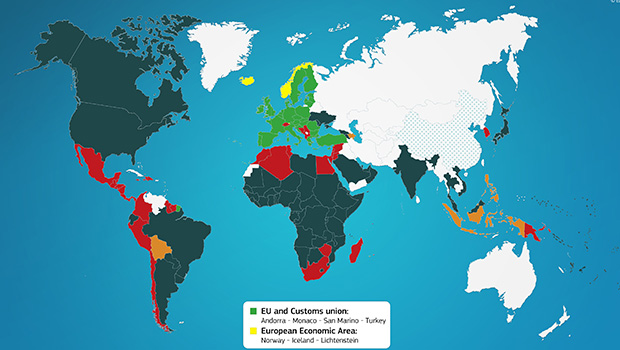Free Trade Agreements(FTA) are much discussed these days. But what exactly are they?
FTAs are agreements between two or more countries that institute a free trade area. These deal reduce barriers and tariffs on goods originated and circulating within the area with the aim to increase the overall commerce balance and facilitate interactions and business in a broad sense.
Lately, one of the hottest topic in Brussels is a planned FTA between the EU and the USA, which is planned to be signed in 2016. Yes, we are talking about the TTIP – Trans Trade and Investment Partnership.
Proponents of TTIP claim that such agreement will result in a tremendous growth for both side of the Atlantic, while opponents are mostly afraid of a possible incorporation of an Investor-to-State Dispute Settlement (ISDS) into the agreement. In their view, an ISDS will increase corporate power and make it will make more difficult for governments to regulate markets for public benefit.
The media has covered TTIP extensively, catalysing the increased public interested in the negotiations and debates surrounding it. However it is not the first time such a deal was being negotiated. But are we aware of Europe’s other FTA’s?
With this article we want to show a few of the most successful FTAs and their positive effects on trade.
- FTA with Mexico
This North American giant-to-be has signed with the EU a FTA in the early 2000; since then it was an enormous success as bilateral trade has more than doubled: just to give an example, the total bilateral trade increased from 20 billion to almost 50 billion in less than 12 years. Recently both the EU and Mexico have agreed on further develop this FTA including new areas such as services, public procurement to deepen cooperation and economic exchange. - FTA with South Korea
The EU-South Korea free trade agreement entered into force in July 2011 and represented the first of a “new generation” of free trade agreements that went further than before at lifting trade barriers and making it easier for European and Korean companies to do business together. As the FTA has lowered import tariffs for European products at the Korean border, EU exports to the peninsular country have grown strongly giving the EU a trade surplus with Korea for the first time in 15 years. - FTA with Central America
As the EU is Central America’s (meaning the States of Panama, Nicaragua, Costa Rica, Guatemala, Honduras and El Salvador) second biggest trading partner (after the USA), this agreement was concluded to further open both markets one to the other and to mutually open up markets. Entered into force in 2013, the agreement is also meant to reinforce economic integration between the members of the Central American region themselves, as it provides standards and best practices to be possibly applied in the area.
In addition to the previous mentioned FTAs, the EU has currently four other FTA’s in force, ten finished agreements that are yet to become applicable and twelve agreements that are on-going. If then we add these FTAs to other commercial agreements (e.g. the EEA with Iceland, Norway and Lichtenstein or the Customs Union with Turkey) in total the EU has fifty trade agreements of all sorts. If we also count that the EU and its member States are part of the World Trade Organisation (whose mission is to liberalise commerce worldwide), there are very few countries the EU does not have any sort of commercial agreement with.
FTAs have been proven as great chances of economic growth for both the EU and its partners, will the TTIP also result in this remarkable impact for our continent’s economy? Time will be the only judge.

Leave a Reply